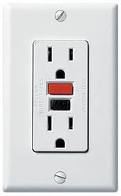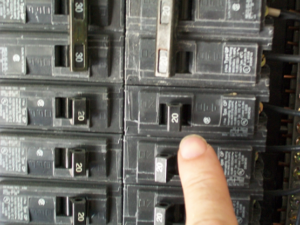Maintenance FAQ
Tenants are expected to do routine property maintenance such as resetting circuit breakers and changing furnace filters. If a service person comes to your rental home and makes a repair to something that is normally reserved for tenants, you will be responsible for the bill. SOLVING MAINTENANCE PROBLEMS PUTS MONEY IN YOUR POCKET!
Prevention is the key. Have you kept up on all of your preventative and routine maintenance?
Below you will find instructions on how to fix and prevent various problems in your rental home.
Prevention and Safety Tips
I smell natural gas!
What to do if you smell natural gas. (Broken link from original site)
Avoid Furnace Malfunctions
Change the filter once a month Often times there is a switch near or on the heating unit in the furnace room. If maintenance is called and the switch needs to be reset, the resident will be charged for a service call.
Smoke Detector
Check smoke detector at least once per month.
Maintain your smoke detector. (Link broken)
Mold and Mildew Control
Water in your home can come from many sources. Showers cooking or even sweating can add moisture to the air in your home. The amount of moisture that the air in your home can hold depends on the temperature of the air. As the temperature goes down, the air is able to hold less moisture. This is why, in cold weather, moisture condenses on cold surfaces (for example, drops of water form on the inside of a window). This moisture can encourage biological pollutants to grow.
Poor Maintenance Management = Mold and Mildew Risk
The key to mold control is moisture control.
When water leaks or spills occur indoors – ACT QUICKLY. If wet or damp materials or areas are dried 24-48 hours after a leak or spill happens, in most cases mold will not grow.
Keep indoor humidity low. If possible, keep indoor humidity below 60 percent (ideally between 30 and 50 percent) relative humidity. Relative humidity can be measured with a moisture or humidity meter, a small, inexpensive ($10-$50) instrument available at many hardware stores.
If you see condensation or moisture collecting on windows, walls or pipes ACT QUICKLY to dry the wet surface and reduce the moisture/water source. Condensation can be a sign of high humidity.
Run the bathroom fan or open the window when showering. Use exhaust fans or open windows whenever cooking, running the dishwasher or dishwashing, etc.
Increase ventilation or air movement by opening doors and/or windows, when practical. Use fans as needed.
If mold is a problem in your home, you should clean up the mold promptly and fix the water problem. Report all water plumbing leaks immediately!
It is important to dry water-damaged areas and items within 24-48 hours to prevent mold growth.
Problem areas to check:
On a wall behind a bed.
Behind other furniture.
In closets, especially behind piled clothing.
Home Maintenance Tips
Electricity FAQ
The Receptacle (plugin) Doesn’t Work in the Living Room
Many buildings have receptacles in the living room that are controlled by a light switch, so residents can control lamps with the switch. Try the switches in the living room before making a maintenance request.
No power in the garage or bathroom?
Ground Fault Circuit Interrupter (GFCI) receptacles give increased protection to kitchens, bathrooms, garages and basements. These plugs will typically trip before a breaker. To reset, push the “test” button and then push the “reset” button.

Check Breaker

This is an example of what a tripped breaker looks like. Notice that it doesn’t turn off all the way. It is in the middle. Before resetting, unplug everything and turn all lights off to the circuit. Also ensure that no unsafe conditions exist. Some examples may include standing water, bared wires, or a broken receptacle. To reset, push to the off position and then push back to the on position.
Check Fuse
Some older houses use fuses for electrical safety. Located inside or outside of your home is a fuse box that contains a fuse for each of your home’s circuits. A fuse provides protection for each of your electrical circuits by stopping the flow of current if an overload or fault occurs. When an electrical short occurs or the load on your circuit becomes too great, the fuse on that circuit burns out and breaks the circuit; this is what is referred to as a “blown fuse.”
How To Replace A Fuse (Link Broken)
Reset GFCI Outlet
How to Unclog Your Toilet
Garbage Disposal Not Working
Dishwasher is Leaving Hard Water Stains
Unclog Your Drain
Fix a Slow Drain
(Link broken)




